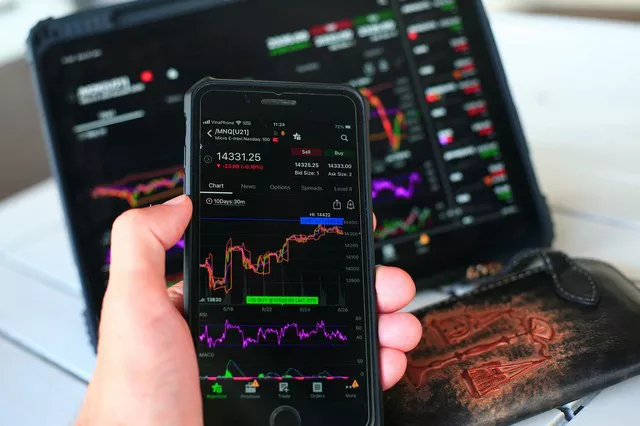Dow futures, also known as Dow Jones Industrial Average (DJIA) futures, play a significant role in the financial markets as indicators of market sentiment and future price movements. Understanding how Dow futures are calculated is essential for investors, traders, and financial professionals seeking to gain insights into the performance of the Dow Jones Industrial Average and make informed investment decisions. In this article, we will explore the methodology behind the calculation of Dow futures and shed light on their significance.
What Are Dow Futures?
Dow futures are financial contracts that enable market participants to speculate or hedge against the future price movements of the Dow Jones Industrial Average. The Dow Jones Industrial Average is a price-weighted index comprising 30 large, publicly traded companies representing various sectors of the U.S. economy. It serves as a benchmark for the overall performance of the U.S. stock market.
Calculation Methodology
Dow futures are calculated using a methodology that takes into account the price movements of the 30 component stocks in the Dow Jones Industrial Average. The calculation process involves several steps:
-
Selecting Component Stocks
The Dow Jones Industrial Average consists of 30 component stocks selected by the index committee. These stocks are chosen based on their representation of various industries and their significance in the U.S. economy.
-
Calculating the Price-Weighted Average
Unlike most other stock market indices, which use market capitalization as the weighting factor, the Dow Jones Industrial Average is a price-weighted index. This means that the higher-priced stocks have a greater impact on the index’s movements. To calculate the average, the price of each component stock is summed up and divided by a divisor.
-
Adjusting for Stock Splits and Dividends
Stock splits and dividends can impact the price of component stocks. To ensure continuity in the Dow Jones Industrial Average, adjustments are made to account for these corporate actions. Dividends are typically reinvested in the index, while stock splits require adjustments to the divisor.
-
Determining the Divisor
The divisor is a constant used to maintain continuity in the index’s value over time. As stock prices change, the divisor is adjusted to account for stock splits, dividends, and other factors. The exact calculation and adjustment methodology of the divisor is proprietary information maintained by the index provider.
-
Calculating the Futures Contract
Dow futures represent the value of the Dow Jones Industrial Average at a specific point in the future. The futures contract is calculated based on the current value of the index, taking into account expected price movements and market conditions.
Significance of Dow Futures
Dow futures hold significant importance in the financial markets for several reasons:
-
Market Sentiment Indicator
Dow futures provide valuable insights into market sentiment and investor expectations. A positive or negative movement in Dow futures before the market opens can indicate bullish or bearish sentiment, potentially influencing trading activity and overall market performance.
-
Risk Management and Hedging
Dow futures enable market participants to manage risk and hedge their portfolios against potential market fluctuations. Investors and traders can take positions in Dow futures contracts to offset potential losses in their stock holdings or to speculate on future market movements.
-
Global Market Impact
The Dow Jones Industrial Average is one of the most widely recognized and followed stock market indices globally. As such, movements in Dow futures can have a ripple effect on other global markets, influencing investor sentiment and trading activity worldwide.
-
Investment Strategy Development
Dow futures provide insights into potential market trends and price movements. Investors and financial professionals analyze Dow futures to develop investment strategies, make asset allocation decisions, and assess the overall health of the stock market.
Factors Influencing Dow Futures
Several factors can influence the movement of Dow futures:
-
Earnings Reports
The quarterly earnings reports of the component companies in the Dow Jones Industrial Average can have a significant impact on the index and, consequently, on Dow futures. Positive or negative earnings surprises can cause fluctuations in stock prices, affecting the index’s value.
-
Economic Data
Economic indicators, such as GDP growth, unemployment rates, inflation data, and consumer sentiment, can influence Dow futures. Strong economic data generally leads to positive market sentiment and potentially higher futures prices, while weak economic data can have the opposite effect.
-
Geopolitical Events
Geopolitical events, including political developments, trade disputes, and global conflicts, can create uncertainty in the markets and impact Dow futures. Investors react to geopolitical news, adjusting their expectations and potentially influencing futures prices.
-
Interest Rates and Monetary Policy
Changes in interest rates and monetary policy decisions by central banks can have an impact on Dow futures. Lower interest rates can stimulate economic growth and potentially lead to higher futures prices, while higher rates may have the opposite effect.
-
Global Market Developments
Developments in other global markets, such as major stock indices, currencies, and commodities, can influence Dow futures. Interconnectedness among global markets means that news or events in one market can affect investor sentiment and trading activity in other markets.
Conclusion
Understanding how Dow futures are calculated and their significance in the financial markets is crucial for investors, traders, and financial professionals. Dow futures provide insights into market sentiment, enable risk management, and serve as indicators of future price movements. By considering the methodology behind their calculation, analyzing influential factors, and staying informed about market developments, market participants can make more informed investment decisions and navigate the dynamic landscape of the stock market.


